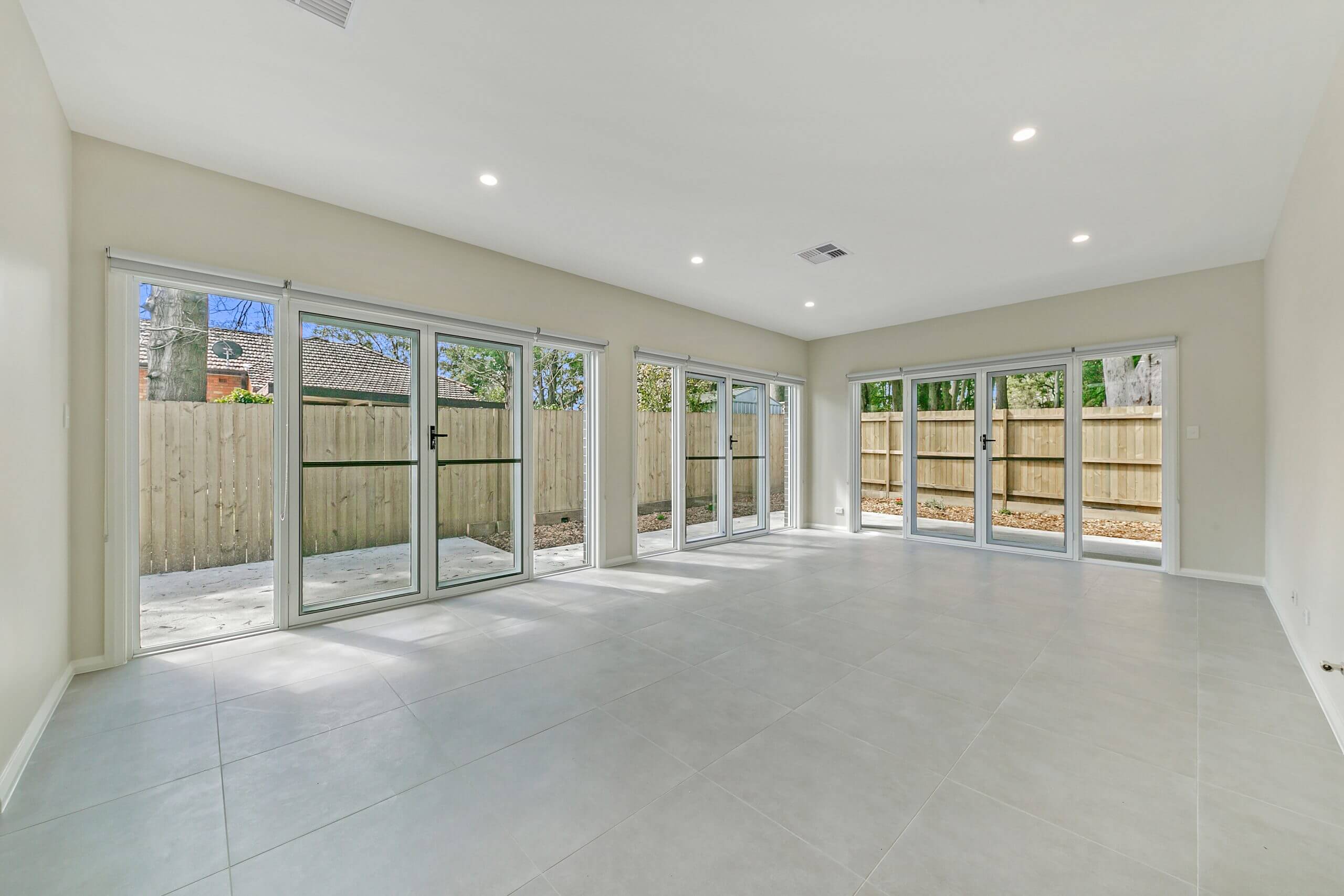
Joint Venture Construction: Exploring Types
In construction, joint ventures have become an increasingly popular way of combining resources and knowledge. This collaborative approach enables companies to take on bigger projects, enter new markets and spread risks. It is vital to understand the complexities and possible pitfalls of joint venture construction for success in such a competitive sector. With historical origins stretching back hundreds of years, joint ventures represent a contemporary answer to intricate building tasks. Follow New South Homes as we go in deeper regarding the various complexity of Joint ventures.
Key Takeaways
- Understanding the various types of joint ventures can help you choose the most suitable one for your construction project from single storeys to double storeys.
- Selecting the right structure for your joint venture is crucial for its success and long-term viability.
- Crafting solid agreements that clearly outline roles, responsibilities, and profit-sharing can prevent misunderstandings and conflicts in the future.
- Managing expectations within the joint venture, including communication, timelines, and deliverables, is essential for smooth collaboration.
- Proactively identifying potential disputes and having mechanisms in place to address them can safeguard the joint venture from costly and time-consuming conflicts.
Exploring Joint Venture Types
Integrated
Integrated joint ventures involve the combining of resources and knowledge from a minimum of two companies into a new entity. Through this, a few things can be achieved which include shared control and risk, pooling resources as well as increased efficiency. However; due to consensus decision making requirement, choices may take longer and conflicts may emerge from different management styles.
Non-Integrated
Non-integrated joint ventures keep the unique identity of each entity while working together towards a particular project or objective. It provides flexibility and independence to every partner but can be difficult to manage due to different efforts coordination and aligning interests among them.
Combination
Combination joint ventures include aspects of interconnected as well as nonintegrated systems. By doing so, an equilibrium between common pool resource utilization and separate functioning is achieved. This fosters synergy among firms while still keeping them independent to some extent.
Equity Joint Ventures
To create an equity joint venture, both parties make investments in a new company. This allows them to share ownership, risk, and profits. Nevertheless, disputes may arise if the partners’ investment amounts are not equal or if they have different strategic goals.
Contractual Joint Ventures
Contractual joint ventures are formal agreements that outline terms of collaboration without establishing a new entity. They allow for flexibility in structuring partnerships without shared ownership complexities. However, difficulties enforcing contractual provisions as well as settling disagreements may still arise.
Suitability in Construction Projects
When large quantities of money and different skills are needed for a big building job, it is best for organizations to unite their efforts in integrated joint ventures. On the other hand, non-integrated joint ventures would be more suitable when smaller projects need specific abilities from each party involved compared to split level homes.
Selecting the Right Structure
Factors Influencing
When it comes to deciding on a joint venture construction structure, there are many things that have to be taken into consideration. These things include the nature of the project, how complex it is and what skills will be needed. It is important for those involved in the tendering process as well as any possible alterations during this time frame to be assessed so as identify the most appropriate framework.
A custom construction projects’ specific needs play a big part in determining which type of Joint Venture should be used. For instance, building large scale infrastructure may require different methods than smaller residential housing estates would need. Therefore it is necessary to understand these requirements if one is going to make good choices.
Project Complexity
Choosing a joint venture structure is affected greatly by the complexity of construction projects. A higher level of collaboration and coordination among partners is often necessary for more complicated undertakings. Therefore, the design should be able to facilitate seamless integration and effective management throughout different stages of the project.
While deciding on a joint venture structure, it is important to take into account the difficulties that come with handling various tasks, teams and timelines that may seem impossible to work with. For any successful project to be done partners should match their abilities with expected intricacies.
Aligning Partners’ Capabilities
To select the right joint venture form, it is important to match partners’ capacities with the model adopted. The expertise, background and assets of each partner should be able to fit well into any standard forms of building contracts selected. This will ensure that all parties contribute effectively towards achieving project objectives while at the same time preventing possible conflicts or difficulties.
Crafting Solid Agreements
Key Components
Collective undertaking construction accords are supposed to cover pacts, building contract conditions and tender procedure. These papers spell out shared objectives between involved partners, money aspects, operational terms as well as legal boundaries.
Defining Roles and Responsibilities
It is important to have well-defined responsibilities for everyone involved – not only those working on-site but also off-site employees such as contractors or the board overseeing things. In order for this partnership agreement between two companies–or more–to run smoothly there must be outlined methods by which decisions will be made.
Clear Communication and Dispute Resolution
In a partnership contract, it is vital to have open lines of communication. The project may be stalled by conflicts if they are not solved promptly therefore set up ways for settling disagreements quickly. Clearness on methods used to settle conflicts can prevent possible legal problems.
Managing JV Expectations
Setting Realistic Goals
When working on a joint venture construction project, it is important to have realistic goals at the very beginning of it. This means that the aspirations of every party involved should be in line with their abilities and resources. Through establishing attainable milestones and targets, the partnership agreement can be steered by a definite purpose thereby minimizing chances for conflicts resulting from undelivered expectations.
Effective Project Management
When it comes to joint venture construction, successful project management is key. This means coming up with a comprehensive plan that brings together all the aims outlined in the contract of partnership. Regular communication and collaboration between the parties involved is important so as to clarify each person’s duties and deadlines. Also, having a well-defined decision-making process within the joint venture team can be very helpful in solving disagreements or conflicts that may arise during construction.
Role of Monitoring and Evaluation
Joint ventures must be managed effectively to deliver value to all parties involved. Regular monitoring and evaluation is one way of managing their expectations. A powerful reporting framework based on the guidelines for joint venture property development helps partners keep track of progress against agreed targets and notice any variations from an early stage hence allowing for timely corrective measures which ensure adherence to the JV agreement.
Avoiding and Addressing Disputes
Common Sources
Construction disputes in joint ventures often arise due to differing objectives or responsibilities among partners. Issues related to resource allocation, risk management, and experience levels can also lead to conflicts.
Unincorporated joint ventures may face disputes regarding the joint venture agreement, as well as jurisdictions for legal advice. In joint venture property development, disagreements may emerge over the construction approach, benefit sharing, and claim settlements.
Prevention Strategies
Partners can mitigate disputes by establishing clear guidelines within the joint venture contract. Defining each party’s roles, responsibilities, and decision-making processes from the outset is crucial. Regular assessments of project progress and risk evaluation are essential for early issue identification.
Maintaining open communication channels is vital to address potential conflicts promptly. Setting up a structured mechanism for dispute resolution within the joint venture agreement can provide a framework for addressing issues efficiently.
Conflict Resolution
When disputes do occur, partners should aim to resolve them amicably through negotiation or mediation. Seeking legal advice when necessary can help in achieving fair resolutions while safeguarding the interests of all shareholders.
In instances where conflicts cannot be resolved internally, seeking external arbitration or court intervention may become necessary. However, such measures should be considered as a last resort to preserve the collaborative spirit of the joint venture partnership.
Final Remarks
Now you know what’s needed when it comes to setting up a successful joint venture in construction. We have been through all the different types, managing expectations and dealing with disputes. To ensure this happens it is essential that you choose the right structure and make strong agreements. Don’t forget that communication should be open at every stage so nobody thinks there is anything underhand going on because if they do then there could be trouble ahead!
It’s time for you to put these ideas into practice within your own joint ventures. If necessary get some legal advice to ensure everything is binding and matches what we’re trying to achieve here. Find experts now and control ahead of time in the management of these collaborations as there could be any number of problems which might arise, but it will also allow us to gain maximum benefit from them.
Experience
the
Difference
Ready to start your building journey? Chat to our team of experts today and get a FREE personalised quote
Find Out More
Related Posts






